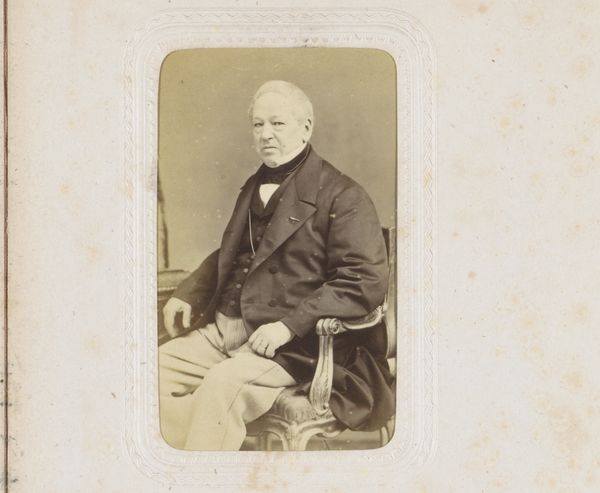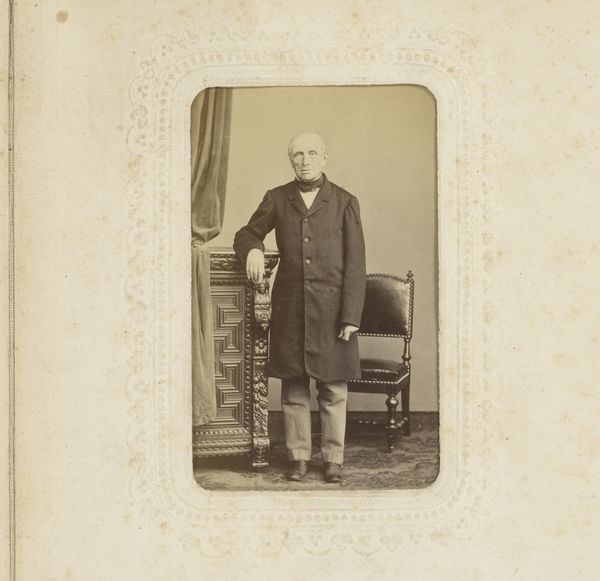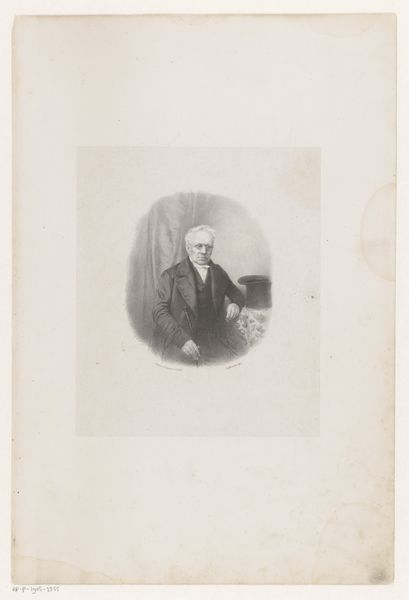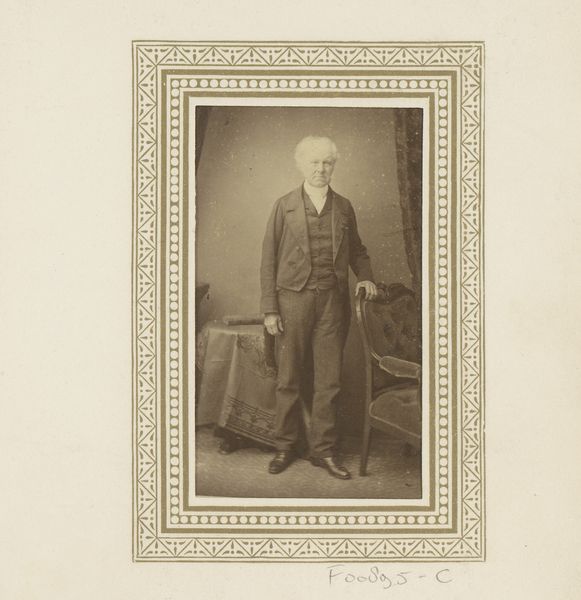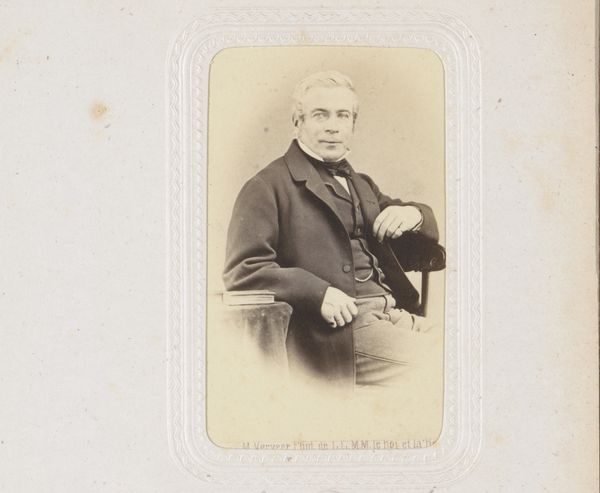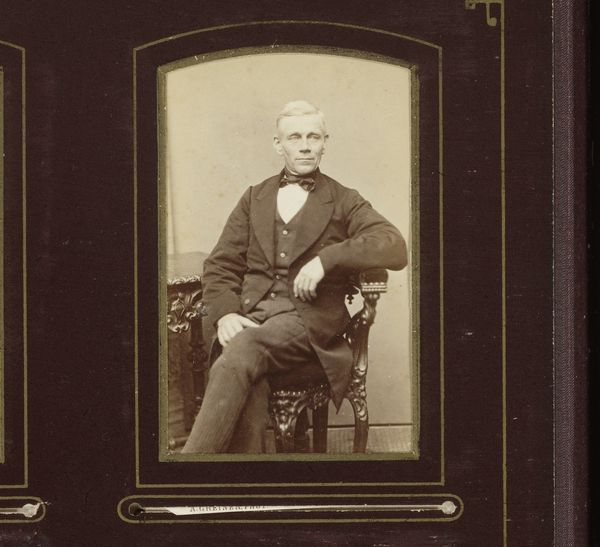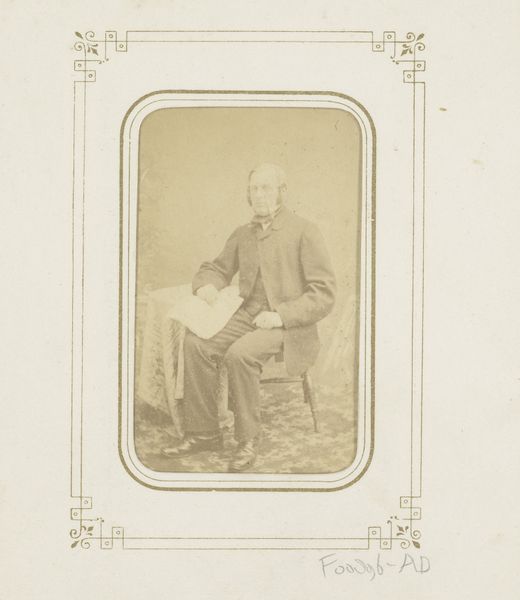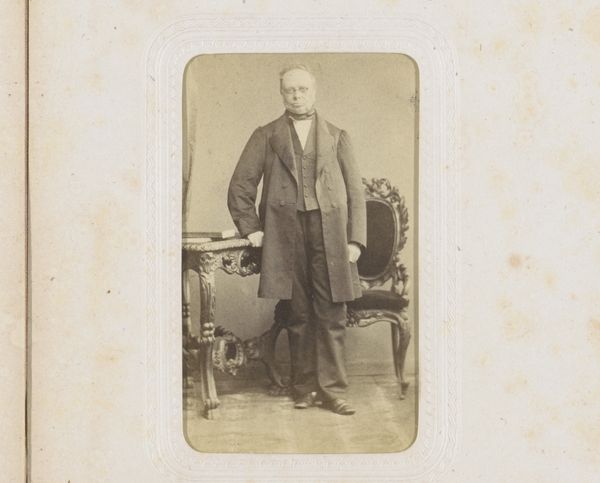
photography, albumen-print
#
portrait
#
photography
#
albumen-print
#
realism
Dimensions: height 82 mm, width 50 mm
Copyright: Rijks Museum: Open Domain
Curator: This albumen print, likely from the period of 1890 to 1910, presents a "Portrait of Gijsbert van Tienhoven". Editor: My first thought is, "stately, yet… somehow melancholy." The sepia tones contribute, but it's really in the posture, the subdued clothing and the overall muted composition, despite its rich detailing. Curator: Interesting you pick up on that. Gijsbert van Tienhoven was, in fact, a rather prominent figure—a former mayor of Amsterdam during a period of significant industrial growth and social change. Photography in this period was about capturing status, a visual manifestation of power. Editor: But there's a vulnerability here, almost at odds with that power. Look at the fine lines etched around his eyes, visible labor apparent in the photograph's detail and development—a sort of memento mori implicit within this era of studio portraits. The albumen printmaking process, although yielding sharpness, also allows for the revelation of textures. Curator: Precisely! And that is vital. Consider, though, the societal implications. Who had access to photography, who could afford to be captured and remembered? The elite, generally. Van Tienhoven's portrait isn’t simply a reflection of one man but speaks to the power structures in late 19th century Dutch society, reflecting how wealth perpetuated itself, even through imagery. Editor: That decorative table to his left tells a different story though, right? The mass manufacturing during this period began making finer objects, things we would today deem fancy, accessible to a wider public, so here the surface reads both material aspiration as well as the artist's craftsmanship. Curator: Fair enough. Yet, let’s not overlook the controlling gaze of the sitter. Even the book resting on the table may reinforce a public perception and access of the ruling class to intellect. It is so clearly posed, the production very carefully arranged. Editor: But that very pose becomes revealing. I suppose I’m still struck by this quiet feeling emanating, but what is exciting is tracing all the layers, labor, intention, materiality. Curator: Agreed. It’s these photographic records like this, these carefully composed presentations of power and status that provide us invaluable insights to a bygone era and what it held dear.
Comments
No comments
Be the first to comment and join the conversation on the ultimate creative platform.
